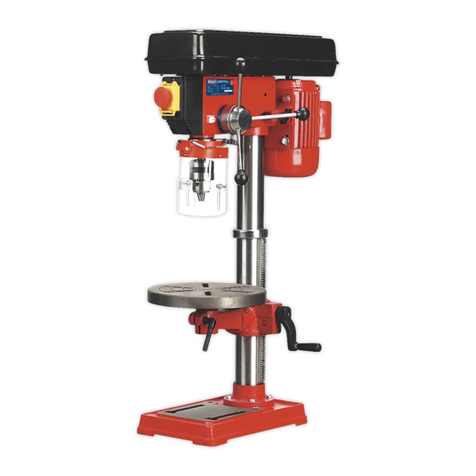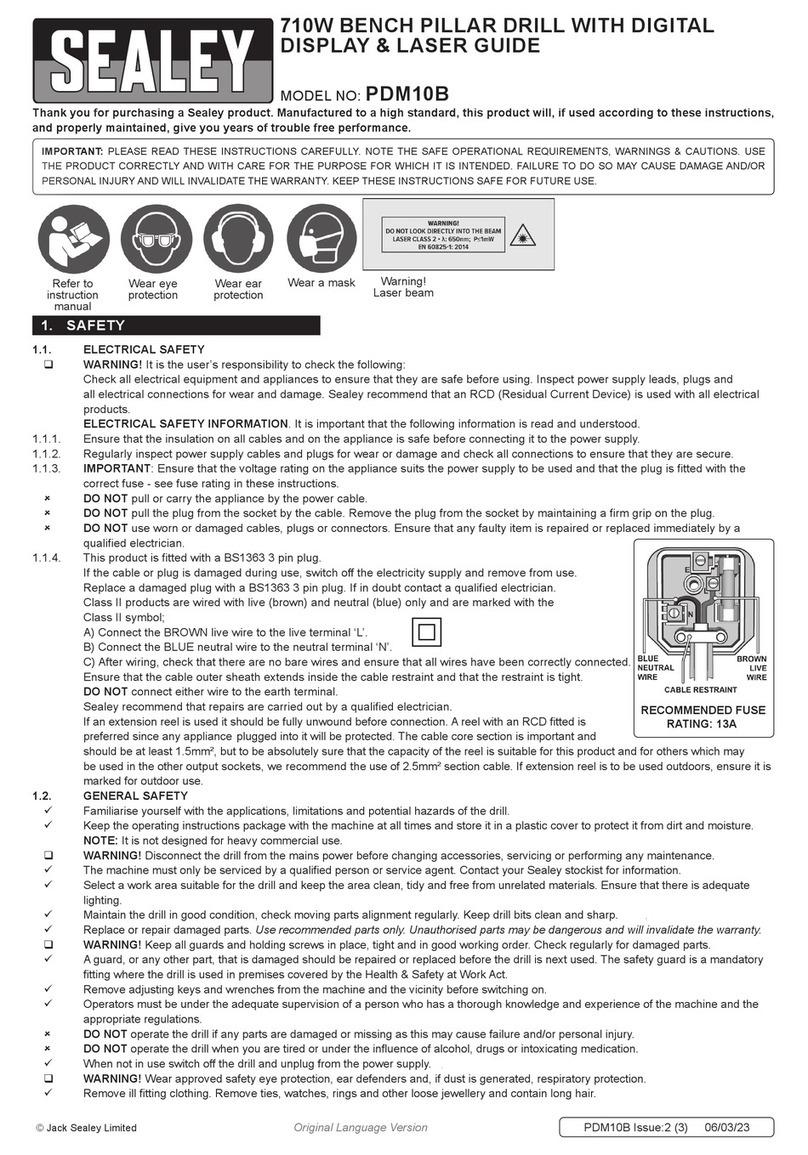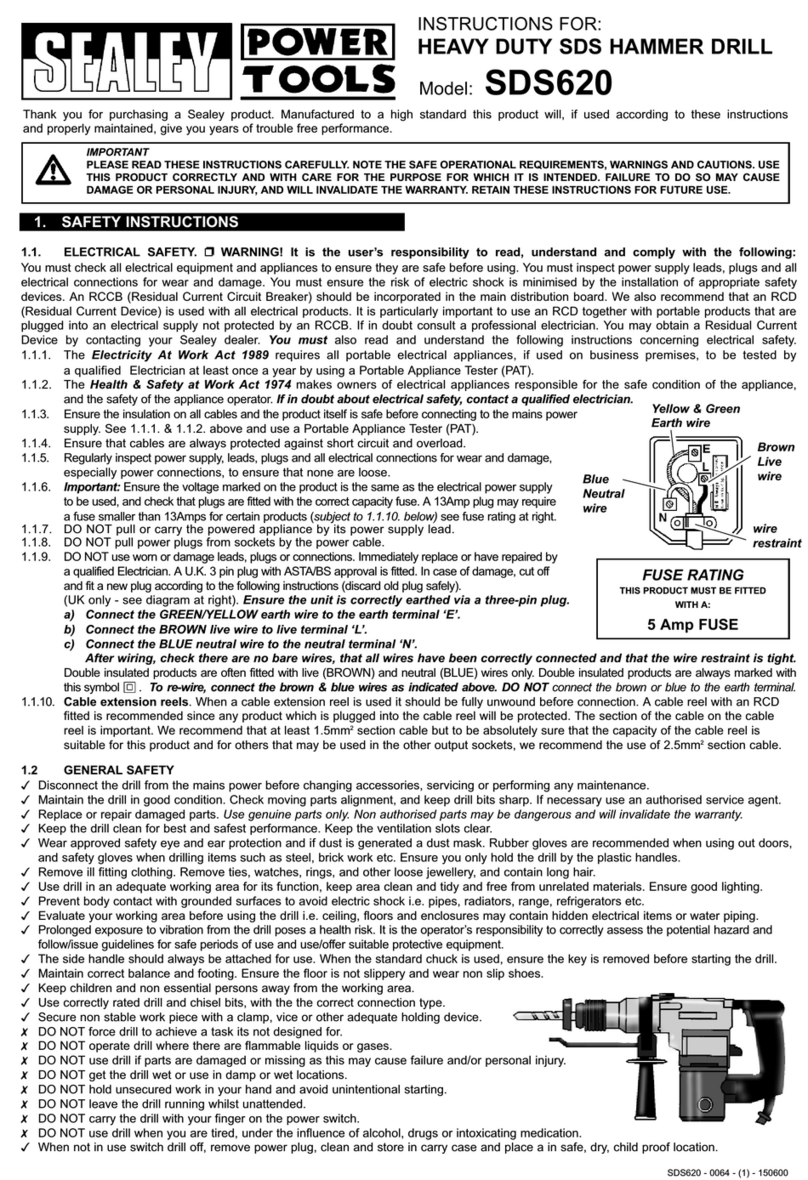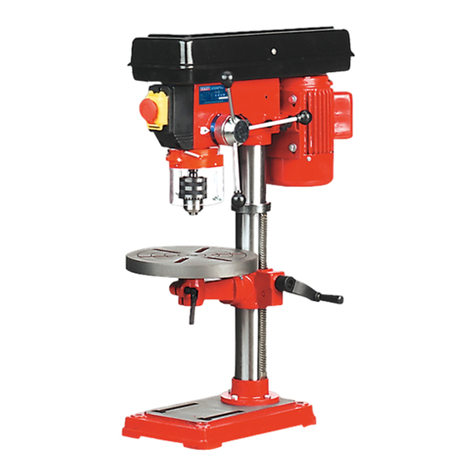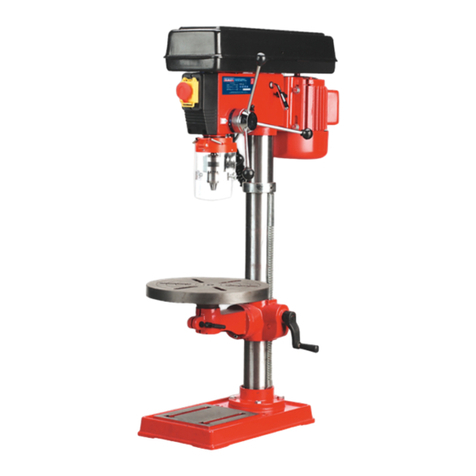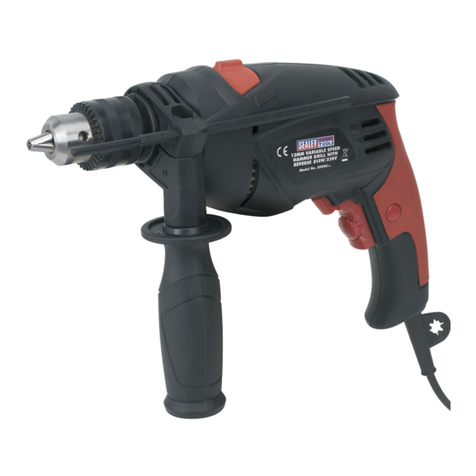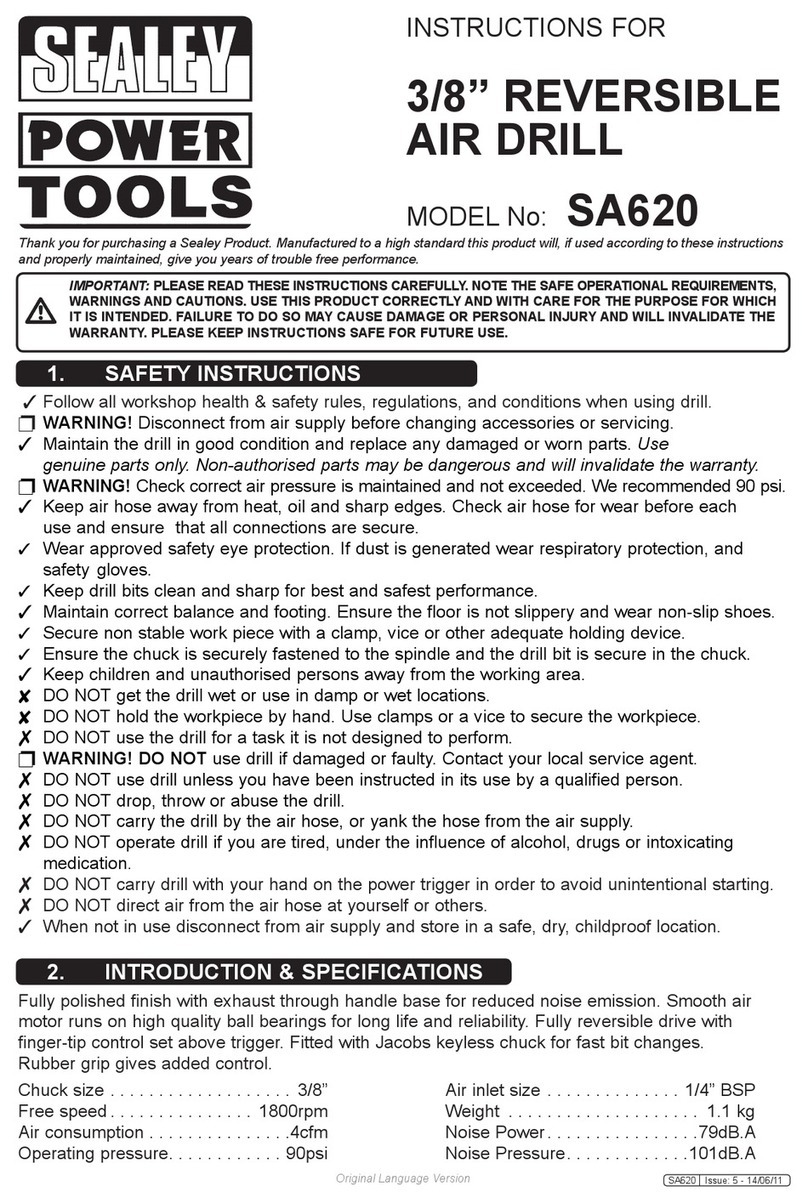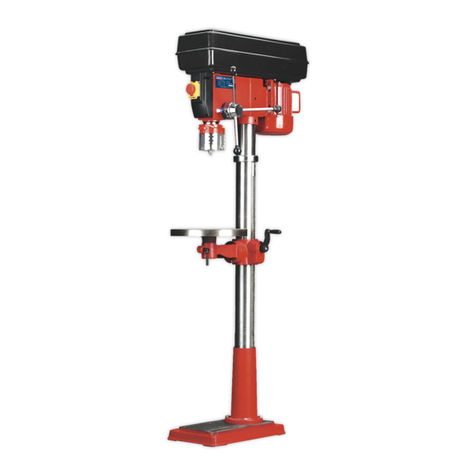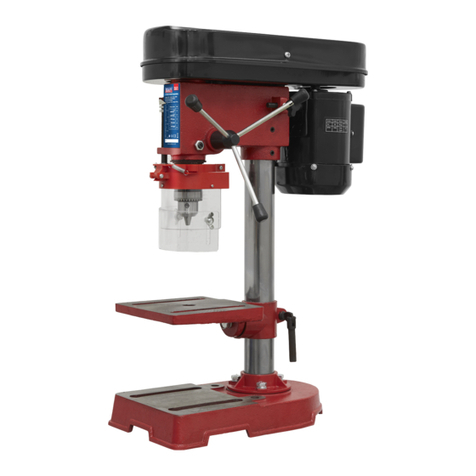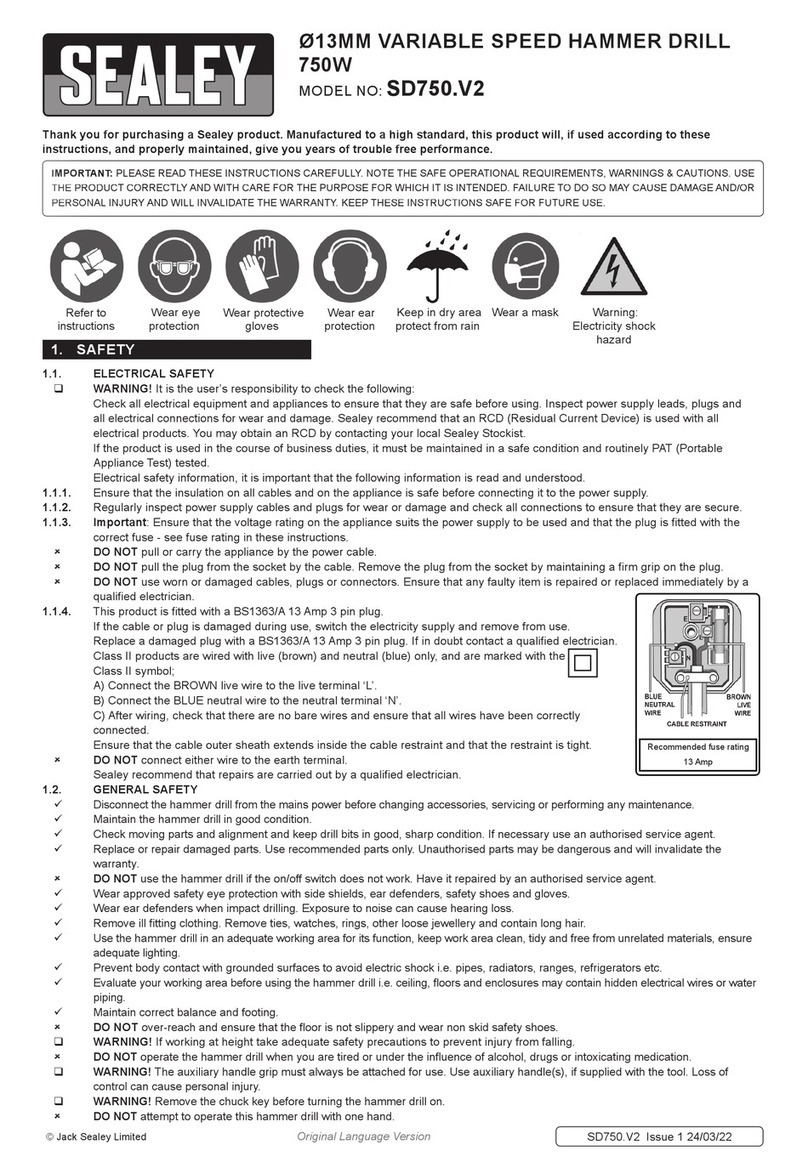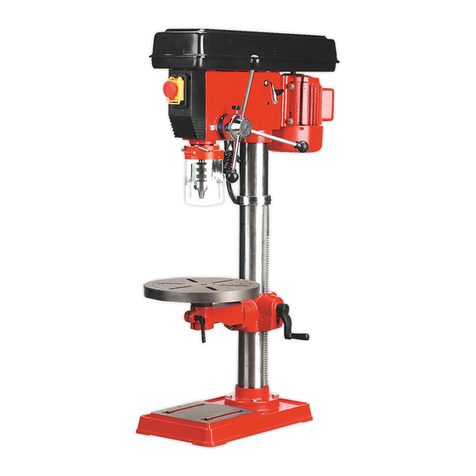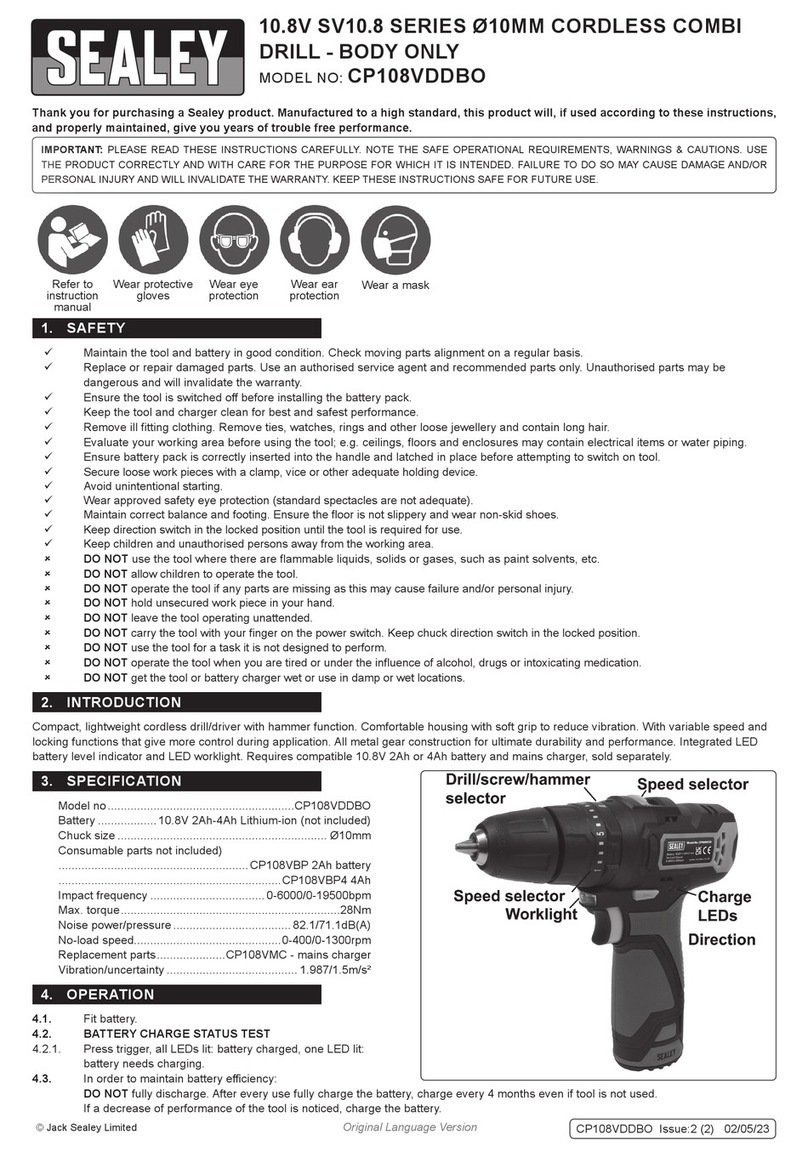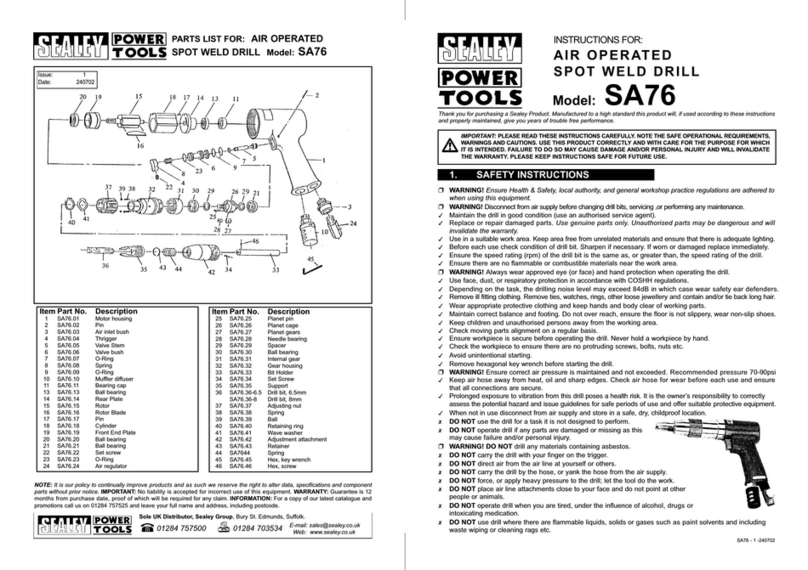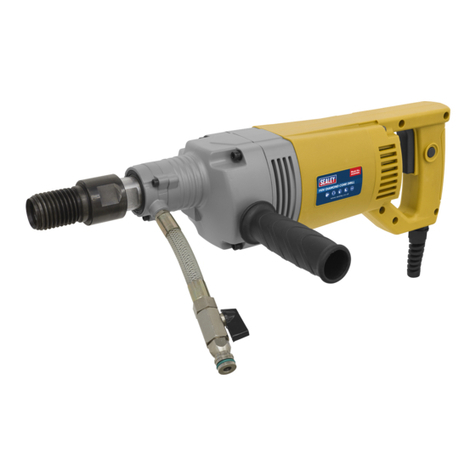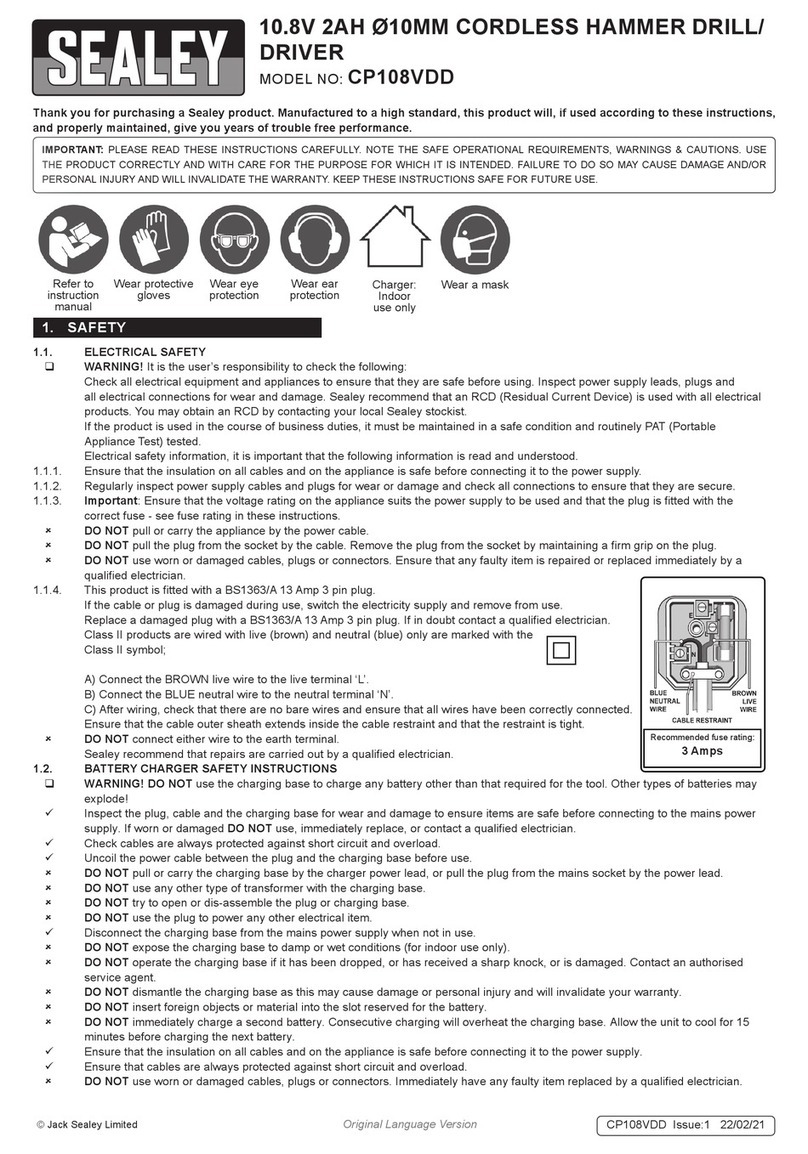
Note: If the depth of the hole is longer than the drill bit you will need to withdraw the drill bit and chop out the core with a hammer and
bolster.
8DO NOT force the drill whilst drilling however use less pressure when you are nearly nished cutting your hole.
4.2. Make sure you have selected the correct type of cutting bit for the material you will be drilling into.
4.3. CONNECTING TO A WATER SUPPLY
9Make sure the water source that you are connecting to is clean and free from grit and other particulate.
9Make sure the supply you are connecting to is no more that 3 bar of pressure.
8DO NOT get the power supply or drill wet.
4.3.1. Attach the short reinforced suction hose to the collar above the chuck.
4.3.2. Connect water hose to the reinforced tube.
9Make sure that all water connections are secure before turning the water supply on.
5. MAINTENANCE
WARNING! Disconnect from mains supply before performing any maintenance.
5.1. Brushes should be replaced by a competent person. Contact your Sealey stockist for more information.
5.2. Remove the cutting bit, before storing.
5.3. Keep the tool clean.
5.4. Store in a dry, childproof location in its case.
FAULT SOLUTION
Overheating Material While Drilling There is not enough water reaching the drilling area.
Run water through the core at a high pressure.
Run water through the sides of the drill pointed at the drilling area.
Material/Drill Vibration, Resulting in Uneven Drill Holes Check your machine and rig for run out (if using a rig).
Make sure the machine is mounted correctly, if using a rig.
Make sure the core bit is tightly connected to the machine.
Make sure the material is held securely using clamps.
Dress the drill to expose a fresh layer of diamond to cut the material. Make 3-5
drill holes in an abrasive stone such as sandstone using plenty of water. Doing
this several times should be enough to wear away the metal carrier to expose a
fresh layer of diamond to cut the material.
Excessive Chipping With Diamond Core Drills Possible incorrect choice of diamond core drill due to a mismatch between the
bond of the segment and the material.
Check the rotation speed for the diameter of the core drill and the material.
Make sure the material is held securely using clamps.
Check the condition of the machine being used.
Make sure there is enough water in the drilling area.
Diamond Drill is Drilling Material Very Slowly This is often due to the “glazing” of the diamond segment, where the drill may
have been used at an incorrect speed and the tool has become overheated,
resulting in the metal bond that holds the diamond failing to wear away at the
correct rate to exposure new diamond crystals.
Use a Sharpening Block to dress the drill to expose a fresh layer of diamond to
cut the material. Make 3-5 drill holes in an abrasive stone such as sandstone
using plenty of water. Doing this several times should be enough to wear away the
metal carrier to expose a fresh layer of diamond to cut the material.
Check that the core plug or debris is not lodged inside the core drill.
Adjust the RPM speed and feed rate.
Segment Loss When Core Drilling This is the most common issue we see with core drills. It usually caused by
overheating which results in a fracture at the point of the segment weld or a
collision caused by an unsecured workpiece.
Consider using a Water Feed to run water through the internal hole of the drill.
Check that a sucient rate of water is reaching the drilling area.
Make sure the material is held securely using clamps.
Check that the core plug or debris is not lodged inside the core drill.
Diamond Drill Is Not Drilling or Cutting This is also usually associated with the “glazing” of the diamond tip.
Check the rotation speed for the diameter of the core drill and the material.
Use a Sharpening Block to dress the drill to expose a fresh layer of diamond to
cut the material. Make 3-5 drill holes in an abrasive stone such as sandstone
using plenty of water. Doing this several times should be enough to wear away the
metal carrier to expose a fresh layer of diamond to cut the material.
Increase the RPM speed.
Check that the core plug or debris is not lodged inside the core drill.
Possible incorrect choice of diamond core drill due to a mismatch between the
bond of the segment and the material.
Original Language Version
© Jack Sealey Limited DCD230V Issue 3 (3) 27/07/2020
